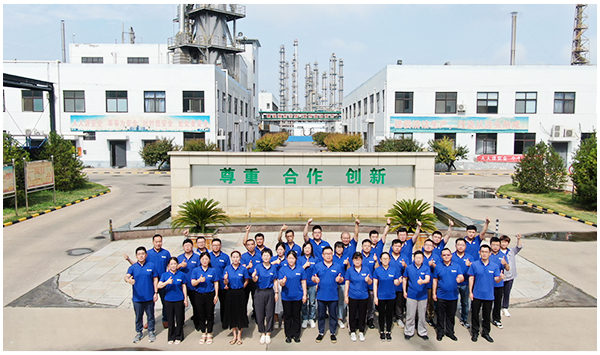
News
Sep . 24, 2024 21:54 Back to list
ce certification six micronutrients for plants
CE Certification and the Role of Six Essential Micronutrients for Plants
In the world of agriculture and horticulture, the health of plants is paramount to achieving robust yields and sustainable farming practices. While the focus often rests on macronutrients like nitrogen, phosphorus, and potassium, a growing body of research underscores the significance of micronutrients in plant development. Six essential micronutrients—iron (Fe), manganese (Mn), zinc (Zn), copper (Cu), boron (B), and molybdenum (Mo)—are vital for optimal plant growth, and understanding their role helps in better agricultural practices. The connection to CE (Conformité Européenne) certification extends this discussion by highlighting standards in quality and safety for agricultural inputs.
The Importance of Micronutrients
Micronutrients, required in minute quantities, are critical for numerous physiological processes in plants. Each of the six micronutrients plays a unique role
1. Iron (Fe) Vital for chlorophyll formation, iron is crucial for photosynthesis. A deficiency can lead to chlorosis, characterized by yellowing leaves and reduced growth. Since iron is only available in certain pH ranges, soil management practices can help ensure its availability.
2. Manganese (Mn) This element contributes to photosynthesis and the synthesis of certain enzymes. Manganese deficiency often results in interveinal chlorosis, where leaves exhibit yellowing between the veins.
3. Zinc (Zn) Essential for DNA synthesis and the production of growth hormones, zinc has a direct influence on plant vigor and yield. Deficiency can cause stunted growth and delayed maturity.
4. Copper (Cu) Copper plays a role in photosynthesis, respiration, and electron transport. It is also vital for lignin synthesis, which strengthens plant cell walls. Without adequate copper, plants may experience wilting and poor root development.
5. Boron (B) This micronutrient is essential for cell wall formation and reproductive development. Boron deficiency often leads to flower and fruit drop, affecting crop yields significantly.
6. Molybdenum (Mo) It is integral for nitrogen metabolism in plants. A deficiency can impair the conversion of inorganic nitrogen into a form that plants can absorb, impacting overall growth.
Understanding and managing these micronutrients ensures that plants grow healthy and productive, leading to food security and sustainable farming practices
.ce certification six micronutrients for plants

CE Certification and Agricultural Inputs
In a globalized market, the quality of agricultural products varies significantly, which has heightened the need for regulations to ensure safety and efficacy. CE certification signifies that a product meets European Union health, safety, and environmental protection standards. This certification is particularly important for fertilizers and micronutrient products intended for agricultural use.
Products that contain micronutrients can enhance soil fertility and plant health, but they must adhere to strict quality guidelines to be marketed within the EU. CE certification assists in ensuring that these products do not contain harmful substances and are effective in their intended use. Farmers and agricultural businesses can benefit from using CE-certified micronutrients as they are assured of the product's safety and efficiency.
Best Practices for Micronutrient Application
Integrating micronutrients into agricultural practice requires a thoughtful approach
1. Soil Testing Regular soil tests can help determine existing nutrient levels, allowing farmers to apply only those micronutrients that are deficient.
2. Foliar Application Some micronutrients can be effectively applied through foliar feeding, allowing for quick absorption by plants, especially during critical growth stages.
3. Balanced Fertilization Understanding the interplay between macro and micronutrients is essential. Applying them in balance is key to preventing antagonistic interactions that can limit nutrient availability.
4. Crop Rotation and Diversity Employing diverse planting systems can enhance the availability of micronutrients in the soil, as different plants utilize nutrients differently.
Conclusion
The role of micronutrients in plant health is irrefutable, impacting growth, yield, and crop quality. As farmers and agronomists strive for sustainable practices, understanding micronutrients becomes increasingly important. Coupled with CE certification, the assurance of product quality and safety can lead to better agricultural outcomes. By prioritizing both education on micronutrient management and compliance with safety standards, the agricultural community can work towards a more productive and sustainable future.
-
Polyaspartic Acid Salts in Agricultural Fertilizers: A Sustainable Solution
NewsJul.21,2025
-
OEM Chelating Agent Preservative Supplier & Manufacturer High-Quality Customized Solutions
NewsJul.08,2025
-
OEM Potassium Chelating Agent Manufacturer - Custom Potassium Oxalate & Citrate Solutions
NewsJul.08,2025
-
OEM Pentasodium DTPA Chelating Agent Supplier & Manufacturer High Purity & Cost-Effective Solutions
NewsJul.08,2025
-
High-Efficiency Chelated Trace Elements Fertilizer Bulk Supplier & Manufacturer Quotes
NewsJul.07,2025
-
High Quality K Formation for a Chelating Agent – Reliable Manufacturer & Supplier
NewsJul.07,2025
